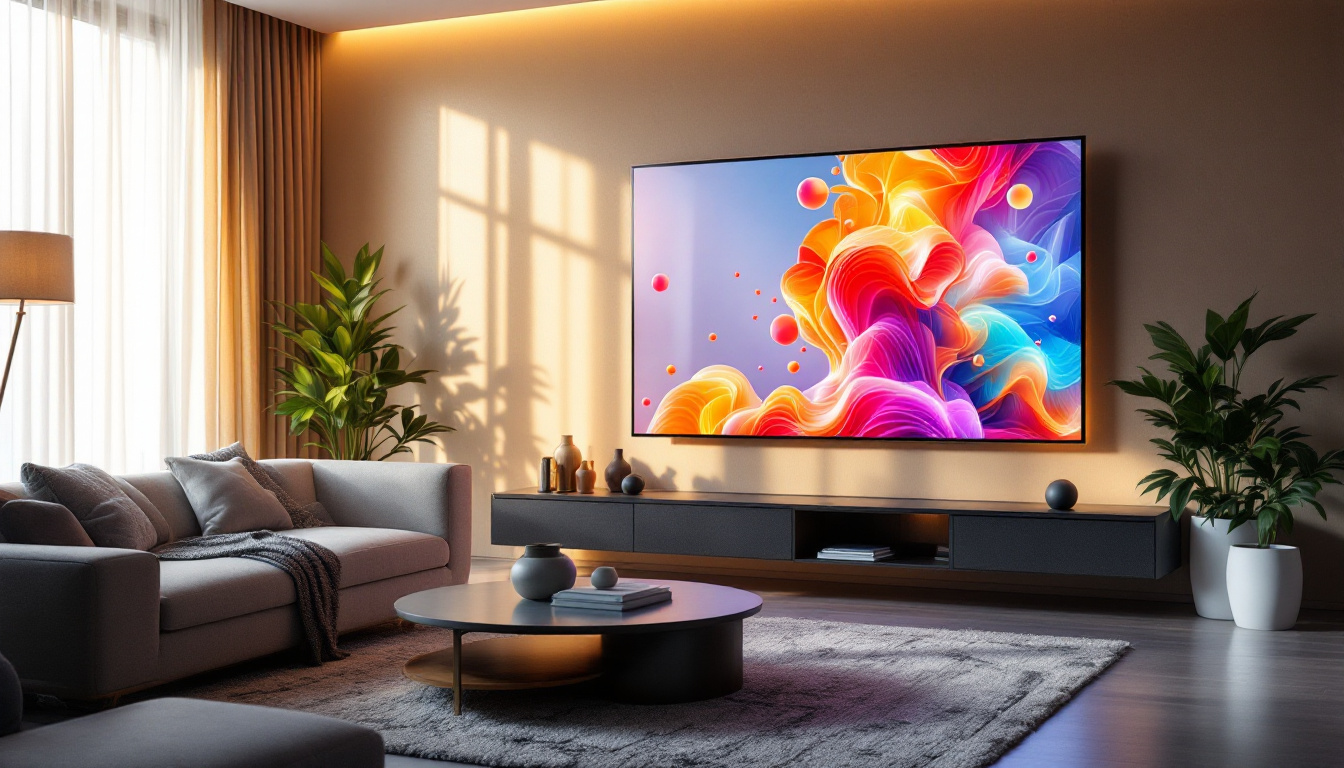Understanding measurements is crucial in various fields, particularly in technology and design. One common question that arises is how to convert meters to inches, especially in the context of LED displays. This article will explore the conversion of 1 meter to inches and delve into the implications for LED display technology.
Understanding the Basics of Measurement
Measurements are foundational in many aspects of life, from construction to digital displays. The metric system, which includes meters, is widely used around the world, while the imperial system, which includes inches, is primarily used in the United States. This difference can lead to confusion when dealing with international products, such as LED displays. For instance, a television screen may be advertised in inches in the U.S., while the same model could be listed in centimeters in Europe, necessitating conversions that can baffle consumers unfamiliar with both systems.
Furthermore, the importance of accurate measurement extends beyond mere convenience; it plays a critical role in safety and quality assurance across various industries. In fields such as medicine, engineering, and manufacturing, even the slightest miscalculation can lead to significant consequences. This underscores the need for standardized units and practices that ensure consistency and reliability in measurements, regardless of the system being used.
What is a Meter?
A meter is the base unit of length in the International System of Units (SI). It is defined as the distance light travels in a vacuum in 1/299,792,458 seconds. This precise definition makes the meter a reliable unit for scientific and engineering applications. The meter has undergone several definitions throughout history, evolving from physical artifacts to a more universal constant based on the speed of light. This shift reflects the scientific community’s commitment to precision and the need for a universally accepted standard that transcends geographical boundaries.
In practical terms, the meter is used in a variety of fields, from architecture to athletics. For example, in sports, track and field events are often measured in meters, which allows for standardized competition across different countries. Additionally, the meter is integral to the design of infrastructure, where accurate measurements are crucial for ensuring stability and safety in construction projects. The adoption of the metric system in many countries has facilitated international collaboration and trade, as it simplifies communication regarding measurements.
What is an Inch?
An inch is a unit of length in the imperial system, commonly used in the United States and a few other countries. One inch is defined as 1/12 of a foot, or 2.54 centimeters. The inch is widely used in everyday measurements, such as height, width, and depth of objects. This unit is particularly prevalent in the construction industry, where lumber and building materials are often sold in inches, making it essential for contractors and builders to be adept at converting measurements when necessary.
Interestingly, the inch has historical roots that date back to ancient civilizations, where it was originally based on the width of a human thumb. Over time, this measurement has been standardized, but its legacy continues to influence how we perceive length in everyday life. In the realm of technology, many devices, such as smartphones and computer monitors, are measured in inches, which can lead to discrepancies when consumers are faced with products from countries that utilize the metric system. Understanding the nuances of these measurements is vital for making informed purchasing decisions and ensuring compatibility across various devices.
Conversion from Meters to Inches
To convert meters to inches, one must understand the relationship between the two units. The conversion factor is straightforward: 1 meter is equivalent to approximately 39.37 inches. This means that when measuring lengths for LED displays or any other applications, knowing this conversion is essential. In many cases, especially in fields like engineering and design, the ability to seamlessly switch between metric and imperial units can save time and reduce errors in projects.
Conversion Formula
The formula to convert meters to inches is simple:
Inches = Meters × 39.37For example, to convert 1 meter to inches:
1 meter × 39.37 = 39.37 inchesThis formula is useful for anyone working with measurements in both metric and imperial systems, especially in industries that rely on precise dimensions. Furthermore, understanding this conversion can also aid in educational settings, where students learn about different measurement systems and their applications in real-world scenarios.
Practical Applications of Conversion
In practical terms, converting meters to inches can be critical when designing LED displays. For instance, if a designer specifies a display size in meters, manufacturers need to convert that measurement to inches to ensure compatibility with existing frameworks and mounting systems. This is particularly important in the context of international projects, where teams may be working across different measurement systems. Additionally, in fields such as architecture and construction, precise conversions can influence everything from material selection to structural integrity, making it vital for professionals to be adept in both metric and imperial measurements.
Moreover, the conversion from meters to inches is not just limited to the realm of technology and design; it extends into everyday life. For example, when purchasing furniture or home decor items, consumers often encounter measurements in inches, while product specifications may be provided in meters. Understanding how to convert these measurements can help individuals make informed decisions about the size and fit of items in their living spaces. This knowledge empowers consumers to navigate a variety of situations, from home improvement projects to international travel, where different measurement standards may apply.
LED Displays: An Overview
LED displays have revolutionized the way information is presented visually. They are used in various applications, from billboards to televisions, and understanding their dimensions is vital for optimal performance.
What is an LED Display?
An LED (Light Emitting Diode) display is a flat panel display that uses LEDs as pixels for video and image display. These displays are known for their brightness, energy efficiency, and longevity compared to traditional display technologies.
Types of LED Displays
There are several types of LED displays, including:
- Direct View LED: These displays use individual LEDs to form images. They are commonly used in large outdoor screens and digital billboards.
- LED-backlit LCD: These displays use LEDs to illuminate an LCD panel. They are prevalent in televisions and computer monitors.
- Organic LED (OLED): This technology uses organic compounds to emit light, offering better color accuracy and contrast.
Importance of Size in LED Displays
The size of an LED display is crucial for its application. Whether it’s for advertising, information dissemination, or entertainment, the dimensions impact visibility and user experience.
Viewing Distance
The size of an LED display directly influences the optimal viewing distance. Larger displays can be viewed from greater distances, making them ideal for outdoor advertising. Conversely, smaller displays are better suited for close-range viewing, such as in retail environments.
Pixel Pitch
Pixel pitch refers to the distance between the centers of two adjacent pixels. This measurement is critical in determining the resolution and clarity of the display. A smaller pixel pitch results in higher resolution, which is essential for applications requiring detailed images.
Calculating Display Dimensions
When designing or purchasing an LED display, understanding its dimensions in both meters and inches can help ensure the right fit for the intended application.
Standard Sizes
LED displays come in various standard sizes, often specified in meters. However, converting these sizes to inches can help in visualizing the actual dimensions better, especially for those accustomed to the imperial system. For example, a display measuring 2 meters by 1 meter translates to approximately 78.74 inches by 39.37 inches.
Custom Sizes
Many manufacturers offer custom sizes for LED displays. When specifying these dimensions, it is essential to provide measurements in both meters and inches to avoid any potential miscommunication. This practice ensures that the final product meets the design specifications accurately.
Installation Considerations
Proper installation of LED displays is crucial for their performance and longevity. understanding the dimensions in both meters and inches can aid in planning the installation process effectively.
Mounting Options
LED displays can be mounted in various ways, including wall mounts, ceiling mounts, or freestanding structures. Knowing the exact dimensions in both systems allows installers to choose the appropriate mounting hardware and ensure the display is securely positioned.
Environmental Factors
When installing an LED display, environmental factors such as sunlight exposure, temperature, and humidity must be considered. The size and placement of the display can affect its visibility and performance. For instance, larger displays may require more robust mounting solutions to withstand wind and other environmental stresses.
Maintenance and Care
Maintaining an LED display is essential for ensuring its longevity and optimal performance. Understanding the size and specifications can aid in planning maintenance routines effectively.
Cleaning and Upkeep
Regular cleaning of the display surface is necessary to maintain image clarity. The size of the display can impact how often it needs to be cleaned and the methods used. Larger displays may require specialized equipment for cleaning, while smaller ones can be maintained with standard cleaning supplies.
Software Updates
Many modern LED displays come with software that requires periodic updates. Understanding the display’s specifications, including its dimensions, can help in ensuring that the software is compatible and that the display operates smoothly.
Conclusion
In summary, understanding the conversion of 1 meter to inches is essential, especially in the context of LED displays. With 1 meter equating to approximately 39.37 inches, this knowledge aids in design, installation, and maintenance. As LED technology continues to evolve, having a firm grasp of measurements will remain crucial for professionals in the field.
Whether one is designing a new display, installing it, or maintaining it, being aware of the dimensions in both metric and imperial systems can enhance communication and ensure successful outcomes. As technology progresses, the importance of precise measurements will only continue to grow.
Explore Cutting-Edge LED Display Solutions with LumenMatrix
Now that you understand the significance of converting meters to inches in the world of LED displays, take the next step in enhancing your visual communication with LumenMatrix. As a pioneer in LED display technology, LumenMatrix offers a comprehensive range of products designed to elevate your brand’s presence and captivate your audience. From Indoor and Outdoor LED Wall Displays to innovative solutions like Vehicle LED Displays, LED Posters, and Custom LED Displays, our mission is to provide you with displays that deliver your message with unparalleled impact and clarity. Check out LumenMatrix LED Display Solutions today and experience the future of visual storytelling.































